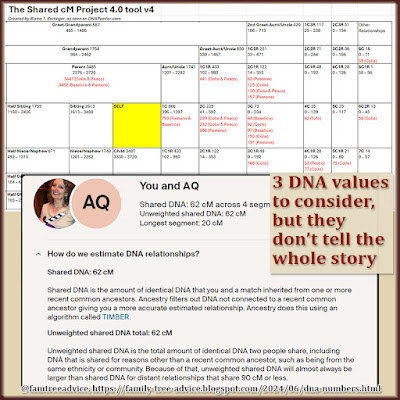My ancestors were not in America to fight in the Revolutionary War or the Civil War. My grandfather Leone was the right age to fight in World War I. But as an Italian citizen, he had to go back to Italy to fight for them.
 |
| Even if your people didn't serve, you may discover family treasures in these military record collections. |
Despite this, I've found great treasures in military records. Are you missing any of these types of records for your family tree?
The Genealogical Benefits of Draft Cards
Grandpa Leone was too old when the U.S. authorities registered him for World War II. There was little chance he'd get the call. His World War II draft card shows the wrong birth date and the wrong place of birth. But I know it's him because the card shows he lives with my grandmother in the house where my mother was born. And he's a shoemaker, which was always his trade.
Grandpa Iamarino was part of the "Young Men's draft," but at 39 years of age, he was unlikely to get the call, too. His draft registration card provided me with the middle name I never knew belonged to my grandmother: Gloria. (My favorite U2 song!) His card confirms his address as the place where my Dad grew up. It also provides the name and address of his employer at the time. This was a company name I hadn't seen before, but when I looked it up, I found it was a costume jewelry company. That, I know, was Grandpa's occupation in New York. This precise job information can add a whole new chapter to your family story. See "Using Documents to Imagine Your Ancestor's Job."
Search for draft registration cards for all the men in your family tree who lived in the USA and were born between:
- 6 Jun 1886 and 5 Jun 1897 (World War I draft registration)
- 11 Sep 1872 and 12 Sep 1900 (World War II first through third registrations)
- 28 Apr 1877 and 16 Feb 1897 (World War II fourth registration)
- 17 Feb 1897 and 31 Dec 1921 (World War II young men's draft registration)
One World War II draft card gave me the name of a hometown lost to time. I tracked down my uncle's birth record in this town in Italy, and it led to treasure. I discovered the hometowns of my 2nd great grandmother and 2nd great grandfather. It was a massive finding. See "Why and How to Harvest Draft Card Facts."
Flight Record Details My Uncle's World War II Death
I used a free trial on Fold3.com to search for anything about my Uncle Johnny's fatal airplane crash in World War II. All we knew about my mother's only brother was that his plane crashed and he died while serving in the war.
His flight record tells me:
- He was part of the 463rd Bomb Group, 773rd Bomb Squadron. He flew out of the same Italian airbase used by the Tuskegee Airmen.
- His B-17G bomber was last seen at 9:48 a.m. on 7 July 1944 at map coordinates that point to Lovászpatona, Hungary.
- The names and home addresses of the 10-man flight crew. The report designates all the men as KIA, killed in action.
- They were on a bombing run targeting Blechhammar, Germany, now part of Poland. This was the location of chemical plants at the time.
- Two Army Air Corps gunners gave eyewitness descriptions of the aircraft's last moments. While Mom heard 5 of the men bailed out of the plane, these eyewitnesses say no parachutes opened.
If you have a relative who served or died in the military, you may find a detailed description of the events, too.
Fallen Soldier Monuments Tie Up Loose Ends
My grandfathers' hometowns in Italy have memorials to their fallen soldiers from World War I and II. I took extensive photographs of the names on these monuments.
I have many cases where a young man from these towns disappeared from the vital records. Now I can use these monuments to see which of them died in the war.
You can find many of these names in online databases. To search for your loose ends, see "Finding Fallen Soldiers in Your Family Tree."
Foreign Military Records Tell the Rest of the Story
I knew my Grandpa Leone had been a prisoner of war in the Italian Army. But apart from hearing that he ate rats to stay alive, I knew no details.
In 2017, the 100th anniversary of World War I, I did some research into the Italian Army's war efforts. (See "POW: My Grandfather's World War I Experience.") The enemy took 250,000 Italian soldiers prisoner during the Battle of Caporetto. That's horrifying! I thought my grandfather could be among those 250,000 men. I read that the Germans held these prisoners in Mauthausen and Milowitz. At least 100,000 died of starvation or tuberculosis.
One year later I went to Italy and found the answers I needed. Thanks to an online resource, I knew the register and record number of my grandfather's military record. So I went to the provincial archives in Benevento and saw the record for myself.
Wow, I was right! He fought in the Battle of Caporetto and wound up at Mauthausen. I learned he spent a solid year as a POW. He spent another two years at home recovering. Thankfully for me, he became healthy again and came to America where he met my grandmother.
If a soldier from the Benevento province died in World War II, his record is available online. I've used many of these records to fill in the blanks for these men. See how I gained access to my grandfather's military record in "Taking a Do-It-Yourself Genealogy Vacation, Part 1."
My article on "Free Italian Military Records for WWI and WWII" has been getting tons of views lately. If you haven't read it, I invite you to see what it may hold for you.
Don't overlook the treasures military records may hold—even if your family did not serve.







